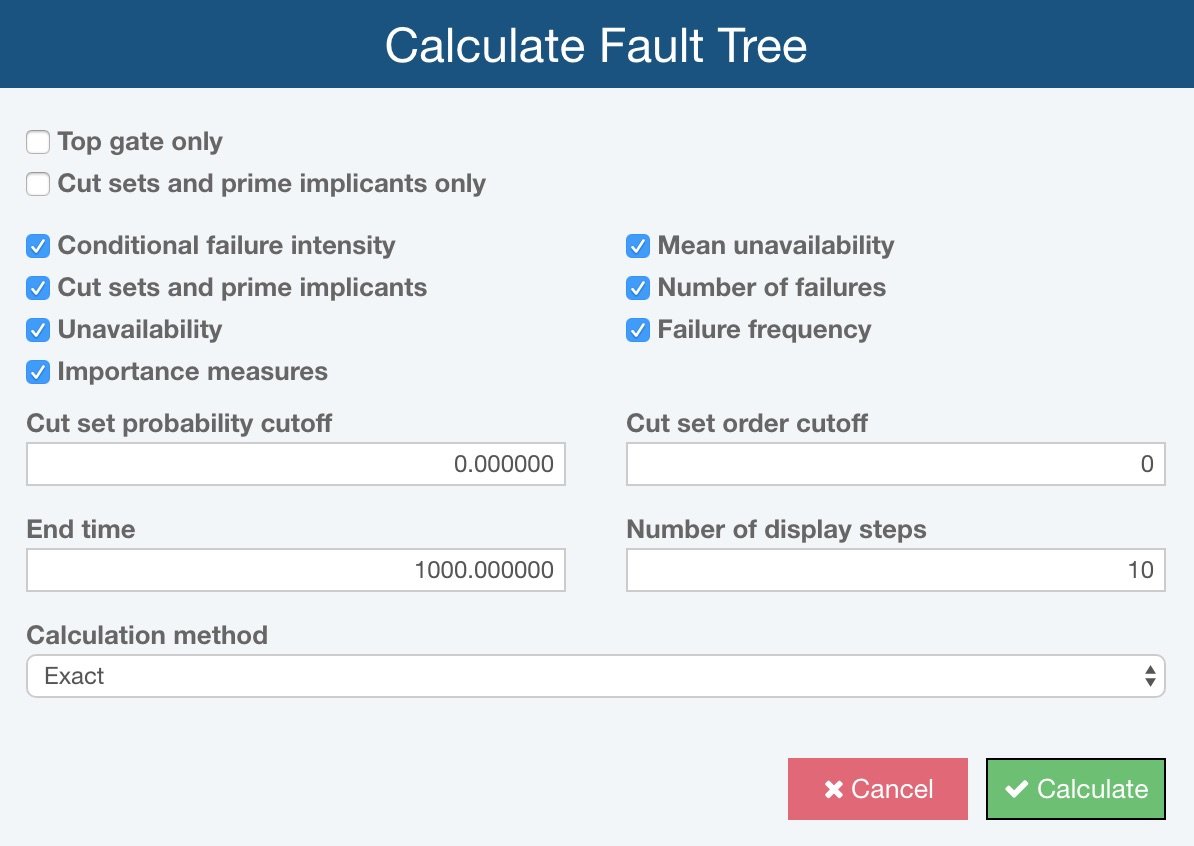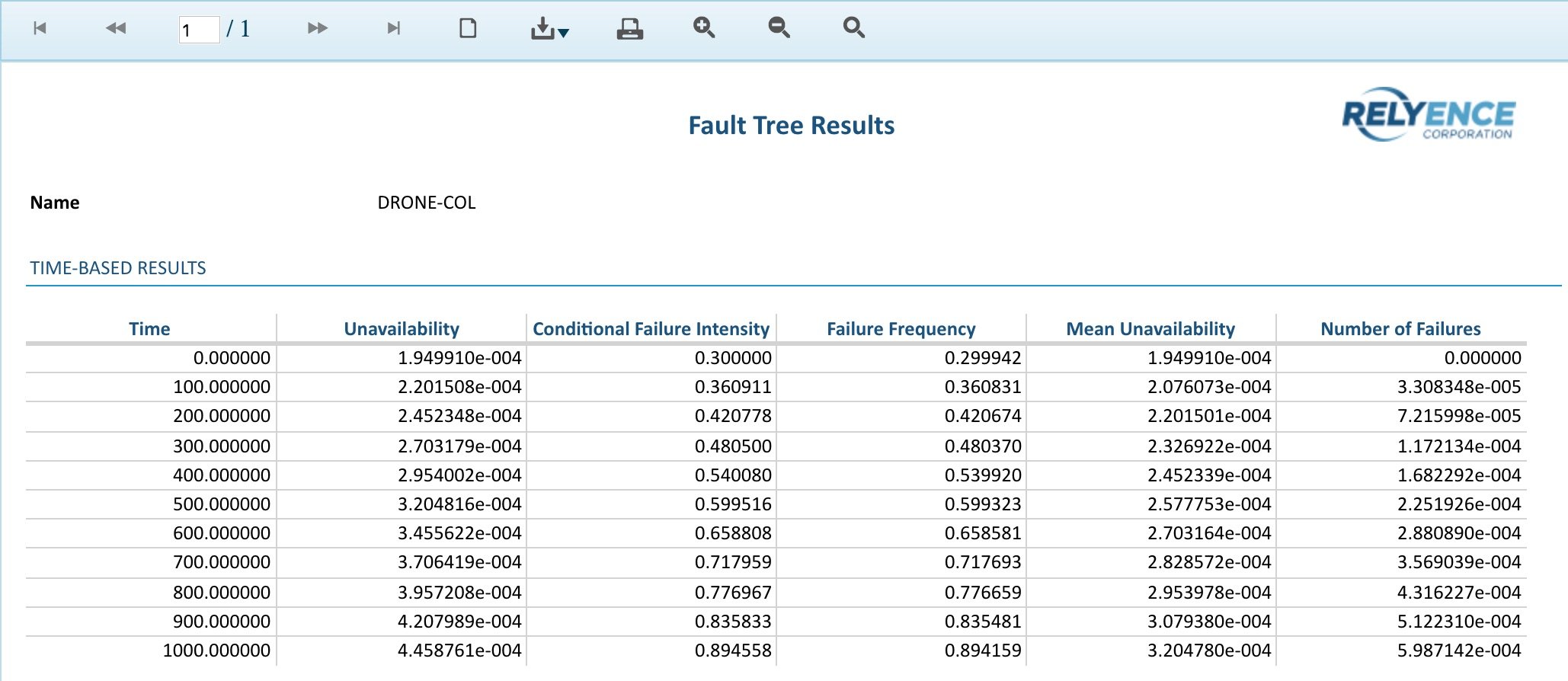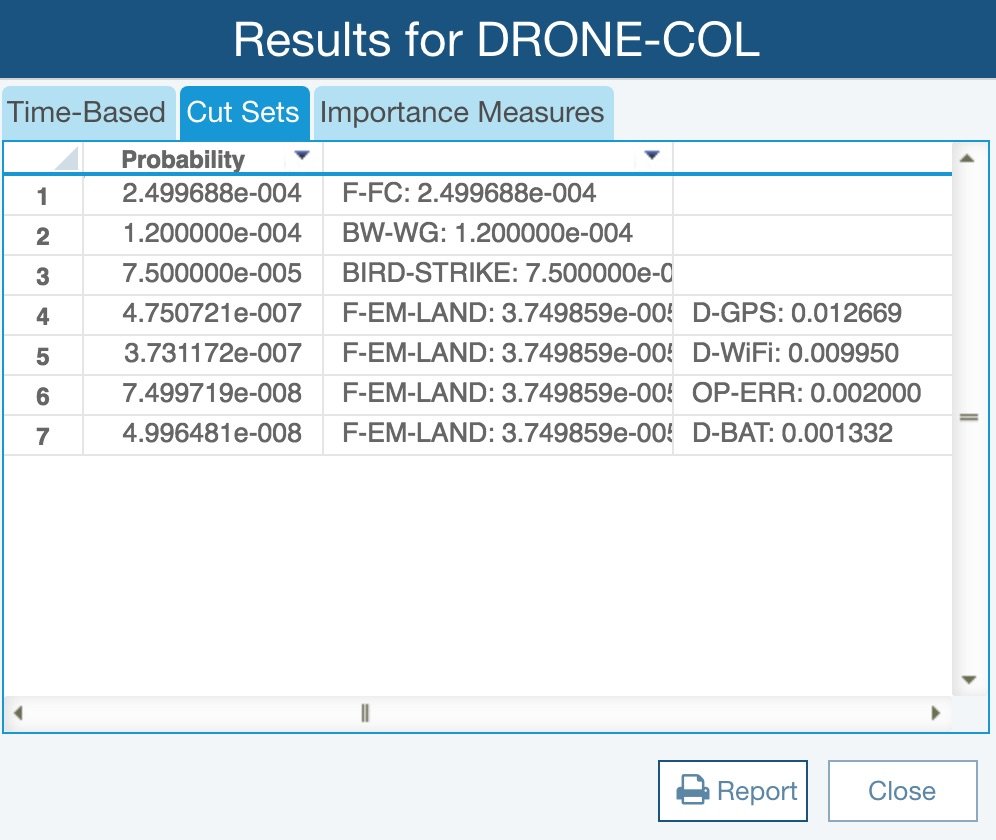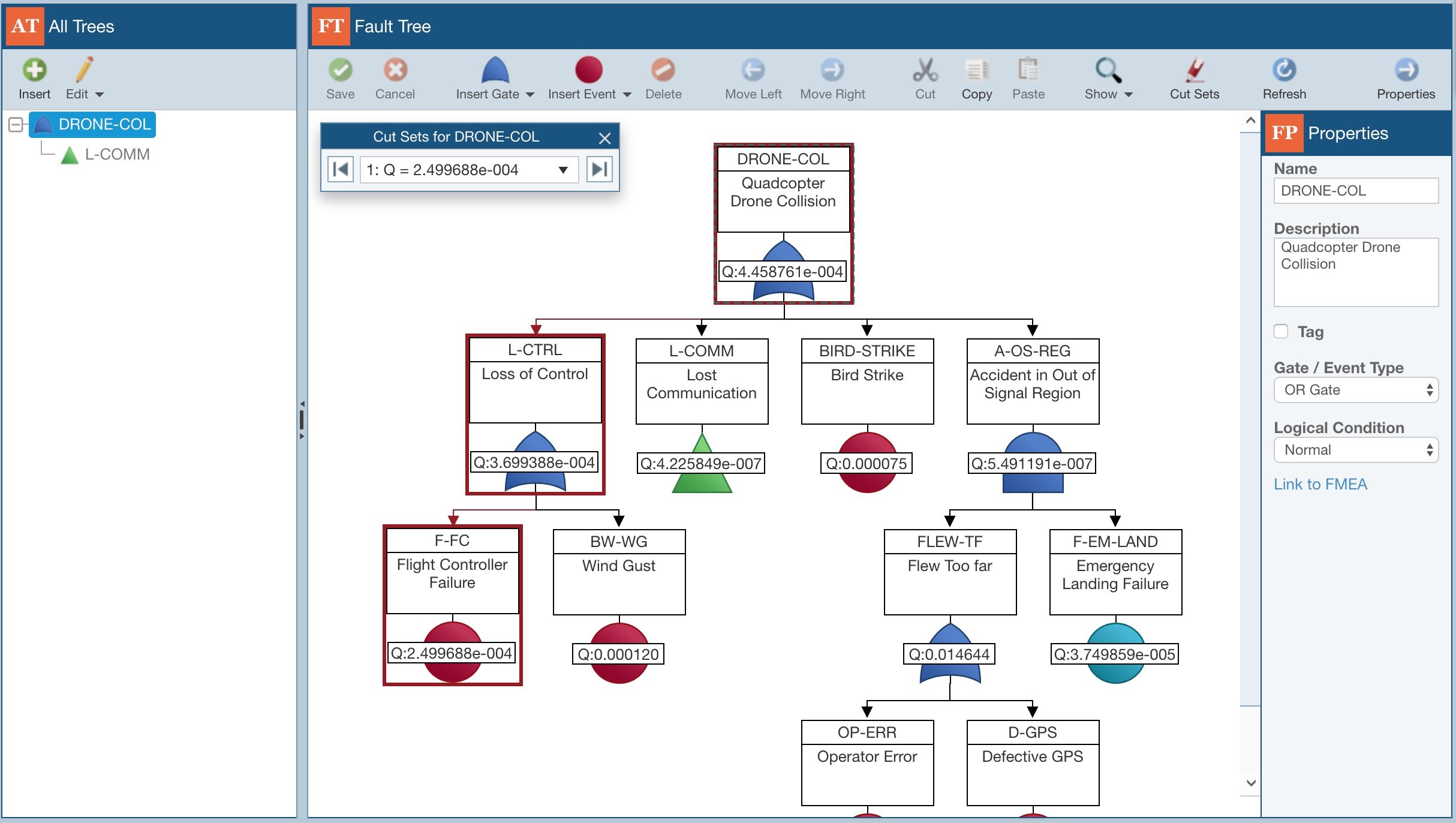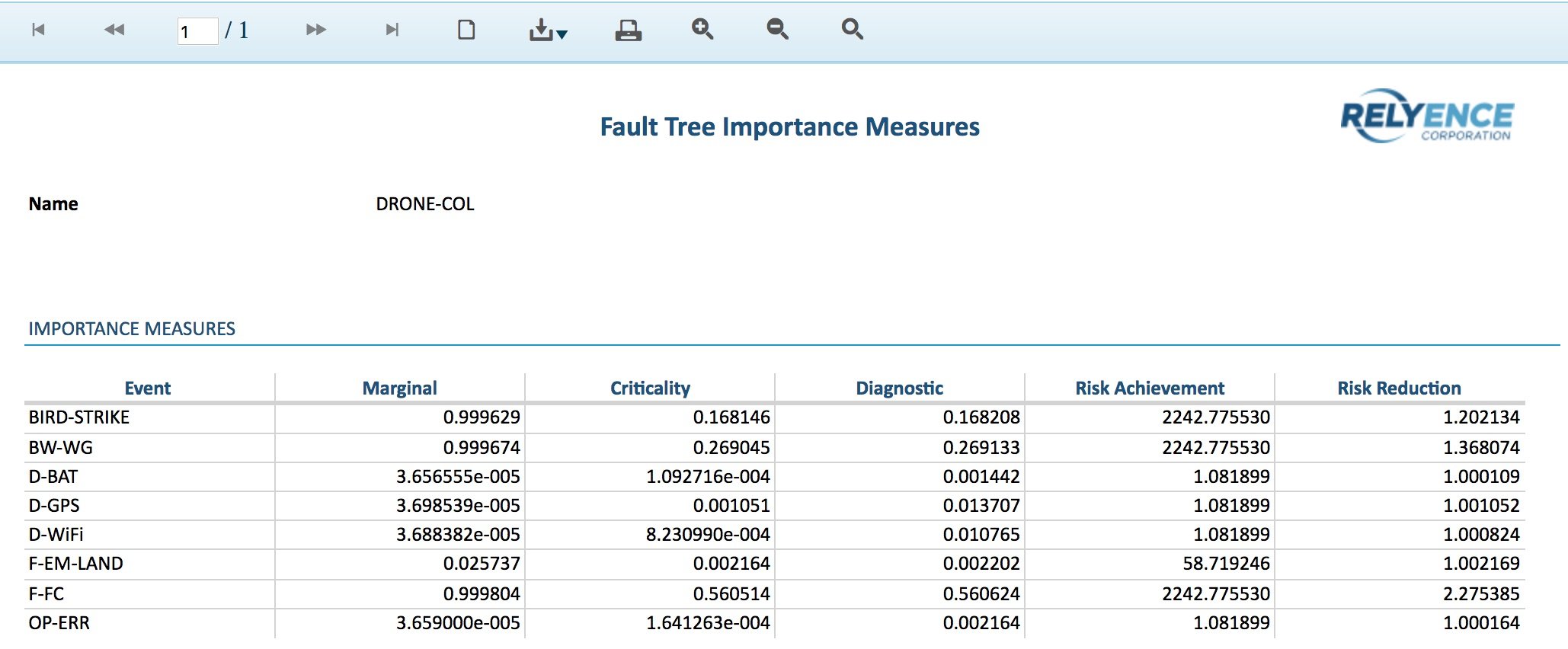FAULT TREE RISK METRICS
The Relyence Fault Tree calculation engine supports many metrics for risk assessment including unavailability, conditional failure intensity, number of failures, and failure frequency. Also, you can choose to compute importance measures as well as minimal cut sets (MCS).
Calculation Methods
The heart of Relyence Fault Tree is the high-powered calculation engine that supports a broad range of computation methods and the calculation of a variety of risk and safety metrics. You can choose the calculation method you would like to use:
- Exact
- Simulation
- Cut Set Summation
- Cross Product
- Esary Proschan
For simulation analyses, you can specify the number of simulation iterations to control the simulation engine. For cut set analyses, you can set cutoff values to optimize calculations.
Calculated Metrics
The Relyence Fault Tree calculation engine supports a number of metrics that you can choose to compute. You can select to only do a qualitative analysis by selecting the Cut Sets and Prime Implicants Only option, which is helpful if you are most interested in cut set evaluation and not specific numerical probability calculations. You can also optionally choose to only compute metrics for the top gate of your fault tree instead of all underlying gates in order to reduce the calculation time if the top gate results are your primary concern. The list of calculation results that Relyence Fault Tree supports includes:
- Unavailability
- Conditional Failure Intensity
- Failure Frequency
- Mean Unavailability
- Number of Failures
Cut Sets
Minimal Cut Set (MCS) analysis identifies all the individual event paths that will ultimately lead to the occurrence of the top-level event in your fault tree. Relyence Fault Tree analyzes your fault tree, determines the minimal cut sets, and computes the probability of each identified MCS. This analysis provides valuable insight into your most at-risk events, allowing you to target improvement and mitigation efforts on those most critical areas.
Cut Set Highlighting
The Relyence Fault Tree Cut Set Highlighter tool sequentially highlights each cut set on your fault tree diagrams, and also enables you to select a specific cut set to highlight. This handy tool enables you to easily view and sequence through the cut sets of your Fault Tree diagram. While most metrics of your Fault Tree Analyses (FTA) are presented in a table format, this graphical format of results is uniquely intuitive and helpful in providing a visual view of system performance.
While you can still see these results in a table listing, the ability to view them directly on the graphical views offers a meaningful and advantageous way to interpret this data. Because the information is much more easily explained and, therefore, understood, these visual views are very helpful for presentations or when working in a collaborative team environment.
Importance Measures
Relyence Fault Tree supports the calculation of importance measures. Importance measures are a useful method for prioritizing risks. The importance measures computed by Relyence Fault Tree include marginal, critical, diagnostic, risk reduction, and risk achievement.

